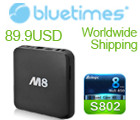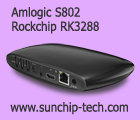Between January 3rd and 11th, I am going to video-blog from CES 2011, make sure to often refresh my RSS feed and/or subscribe to my YouTube channel, (at last year’s CES I published 75 videos), I’ll try to feature the coolest ARM Powered devices that I can find at the show.
Have you got any scoop or ideas for what I should video-blog at CES? What questions would you like me to ask the representatives of which specific companies? If you read on any other blogs about any interesting products showing at this CES, please post your suggestions for what I should film here in the comments of this post. You can also send me an email: charbax@gmail.com or you can even sms/call me or leave a voicemail between January 3rd and 11th at my US phone number +1 (702) 238 8630 (only active when I am in the USA).
Here are some of the things I am expecting or hoping to video-blog at CES:
– Lots of Froyo, Gingerbread and Honeycomb stuff. Android in everything!
– Several dual-core tablets are rumored. Nvidia’s Tegra2 is rumored could be one of the stars of the show, rumored to be the “reference design” for Honeycomb. Sounds great, but I am also looking forward to all the other upcoming Dual-Core ARM Processor platforms and I am wondering if products featuring these will be shown at this CES already.
– How soon are the Dual-Core smart phones and tablets being released and at what prices? Will LG, Samsung, Motorola or other present phones at CES to beat Nexus S already?
– ARM Powered Chrome OS Laptops and Google TV Set-top-boxes, I will be looking for the first clues of these products.
– Tablets, more tablets? Any new design features to allow tablets to be used more for productivity? Are some Honeycomb designs like Archos without the hardware Android buttons? Designs with foldable/swivel keyboards?
– Pixel Qi 7″, 10.1″, big OEM announcements? Hopefully these LCD screens will be ready for Kindle-LCD, ipad2, samsung galaxy tab2 and more hopefully mass manufactured and everywhere within the next 3 months.
– Texas Instruments next generation nHD pico projector in all kinds of phones, tablets and other devices at CES? Or not to be shown before February at Mobil World Congress? I’d like to see this type of pico projector be used together with sensors to detect when touching in user interfaces projected for example on a table (see my video of a table-pico-projector prototype UI demonstrated at CeBIT 2007), this could turn any ARM Powered device, even pocketable, into a large screen computing device.
– New ARM Powered platforms for cheaper and better smart phones, tablets and laptops? Rockchip may show ARM Cortex-A8 RK29xx, Broadcom may show BCM2157 for sub-$75 Android phones, is it time for VIA and Telechips to show new faster or/and cheaper solutions for new cooler low-cost Tablets, Laptops and Set-top-boxes?
– Are the new ARM Processors capable of full 1080p at up to 60fps with full high profile and full high bitrates of every codecs?
– Nintendo 3DS is coming in February/March, any other manufacturers to mass manufacture products to use that parallax barrier 3D screen from Sharp that doesn’t require 3D glasses?
– Are ARM Powered NAS boxes and Pogoplugs/Sheevaplugs going to be powerful enough to download and seed BitTorrents at full speed, allow for full speed gigabit LAN file sharing even on the cheaper solutions?
– How much is going to be LTE, how soon and are anyone showing anything to do with White Spaces yet? How soon could that be deployed and at which cost and with what range and authentication features?
– I’d like to see Sanyo release a HD3000 with WiFi/Bluetooth and optics and sensors closer to that of a DSLR. Or it will be interesting to see more DSLR type optics and sensors in more video camcorders and see how affordable those setups can become. It seems Sony, Panasonic and all other major camera makers are going in that direction for the next generation of best HD camcorders.
Please post your expecations/hopes in the comments or send me an email!












